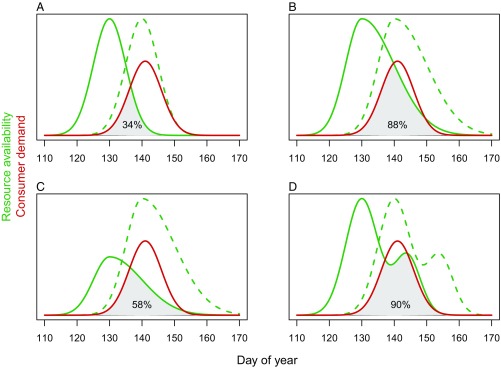Fig. 1.
Changes in phenological synchrony, defined as the temporal delay in early or peak phases of occurrence, may have very different effects on consumer–resource systems depending on a number of other features of the full phenological distributions. In the illustrated examples, the original phenology of resource availability (green dashed line; peak at day 140) has advanced with 10 d (green solid line; peak at day 130), while the consumer demand has stayed unchanged (red solid line; peak at day 141). Assuming no benefits of resource surplus, the intersecting area of the resource and consumer curves (gray shaded area) divided with total consumer demand (area under red curve) is a parsimonious parameter for measuring phenological match (the percentage reported). In the classical scenario (A), where the resource availability and consumer demand are symmetric and narrow, phenological asynchrony strongly affects resource supply. In a wide and right-skewed distribution of resource availability, asynchrony has a much smaller effect (B), and changes in resource population abundance may be much more important (C). Food supply may show multiple peaks, for example corresponding to the phenology of several prey species (D), leading to a situation similar to that described in B.

